Cataloging the Bullitt Family Papers
By Shirley Harmon
Special Collections Assistant
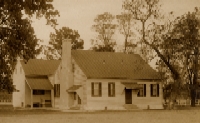 I have been cataloging the Bullitt Family Papers since March 1999 and recently completed the second
phase of the three-phase process. The collection consists of approximately 176 cubic feet of materials,
organized in 194 boxes and 49 oversized folders, making the Bullitt Family Papers the largest collection
housed at The Filson. The papers date from the 1760s to the 1990s and contain a wealth of information
concerning Louisville’s pioneer days, early settlers’ struggles with Indians, Kentucky’s road to statehood, antebellum Louisville,
the Civil War, the early 20th century, and World War II.
I have been cataloging the Bullitt Family Papers since March 1999 and recently completed the second
phase of the three-phase process. The collection consists of approximately 176 cubic feet of materials,
organized in 194 boxes and 49 oversized folders, making the Bullitt Family Papers the largest collection
housed at The Filson. The papers date from the 1760s to the 1990s and contain a wealth of information
concerning Louisville’s pioneer days, early settlers’ struggles with Indians, Kentucky’s road to statehood, antebellum Louisville,
the Civil War, the early 20th century, and World War II.
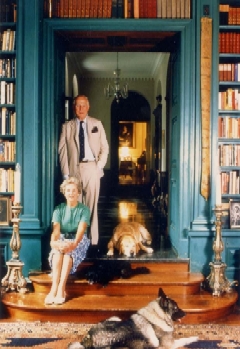 To provide an example of how a collection is processed, I will briefly summarize what I have done in the
past five years. When I came to The Filson in 1999, Jim Holmberg, curator of special collections, introduced me
to the Bullitt collection. At that time it was housed in The Filson’s climate and humidity controlled stacks in six
four-drawer file cabinets and in storage boxes. These papers were placed with The Filson in 1992 following
the death of Thomas W. Bullitt. Thankfully, Thomas’ father, William Marshall Bullitt, had somewhat organized
his ancestors’ papers according to individual family members’ names. Since this collection is so large, the
decision was made to continue cataloging the collection as Marshall Bullitt had originally arranged it, alphabetically
by person’s name.
To provide an example of how a collection is processed, I will briefly summarize what I have done in the
past five years. When I came to The Filson in 1999, Jim Holmberg, curator of special collections, introduced me
to the Bullitt collection. At that time it was housed in The Filson’s climate and humidity controlled stacks in six
four-drawer file cabinets and in storage boxes. These papers were placed with The Filson in 1992 following
the death of Thomas W. Bullitt. Thankfully, Thomas’ father, William Marshall Bullitt, had somewhat organized
his ancestors’ papers according to individual family members’ names. Since this collection is so large, the
decision was made to continue cataloging the collection as Marshall Bullitt had originally arranged it, alphabetically
by person’s name.
My first task was to transfer the materials into acid-free folders and then file them chronologically and alphabetically by name. In general, collections are first arranged by personal correspondence, followed by diaries, business correspondence and papers, legal papers, land papers, military papers, autographs, poetry, speeches, stories, newspaper clippings, miscellaneous envelopes, genealogy and finally other miscellaneous papers and items. The pre-processing phase required one year to complete.
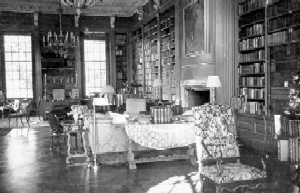 With the pre-processing stage finished, I then started the cataloging process. To catalog a collection,
each letter, will, deed, and paper must be carefully read from the perspective of how the contents of
the
item may be useful for a researcher. For example, in the Bullitt collection is a letter dated 1847 from William C.
Bullitt to his friend Zachary Taylor. Taylor at the time was in Mexico serving in the Army during the Mexican
War. In the letter, Bullitt writes about Taylor’s chances of becoming the next president and also tells him
news from Louisville. From just that one letter is a minimum of five possible subject headings: Bullitt, Taylor,
the Mexican War, United States politics and government, Presidential elections and Louisville history. These
subject headings and the collection information are then typed onto cards for our card catalog and entered into
The Filson’s online catalog. When a researcher studying the Mexican War arrives at The Filson’s special collections
department, he or she can look up “Mexican War” in the card catalog and see that we have this letter among
our collections.
With the pre-processing stage finished, I then started the cataloging process. To catalog a collection,
each letter, will, deed, and paper must be carefully read from the perspective of how the contents of
the
item may be useful for a researcher. For example, in the Bullitt collection is a letter dated 1847 from William C.
Bullitt to his friend Zachary Taylor. Taylor at the time was in Mexico serving in the Army during the Mexican
War. In the letter, Bullitt writes about Taylor’s chances of becoming the next president and also tells him
news from Louisville. From just that one letter is a minimum of five possible subject headings: Bullitt, Taylor,
the Mexican War, United States politics and government, Presidential elections and Louisville history. These
subject headings and the collection information are then typed onto cards for our card catalog and entered into
The Filson’s online catalog. When a researcher studying the Mexican War arrives at The Filson’s special collections
department, he or she can look up “Mexican War” in the card catalog and see that we have this letter among
our collections.
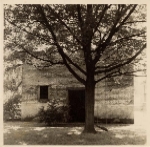 As I cataloged this collection I came across numerous interesting, funny and revealing letters, diary
entries and other papers that provide tremendous insight to the Bullitt family and their farm. Receipts and contracts
from 1790 and 1791 pinpointed exactly when the Oxmoor house was completed. Letters from 1792 and 1799
give a glimpse of the early political climate in the new state of Kentucky and reveal Alexander Scott Bullitt’s
influential role in politics and government. Letters from 1816 tell a story of murder on
As I cataloged this collection I came across numerous interesting, funny and revealing letters, diary
entries and other papers that provide tremendous insight to the Bullitt family and their farm. Receipts and contracts
from 1790 and 1791 pinpointed exactly when the Oxmoor house was completed. Letters from 1792 and 1799
give a glimpse of the early political climate in the new state of Kentucky and reveal Alexander Scott Bullitt’s
influential role in politics and government. Letters from 1816 tell a story of murder on 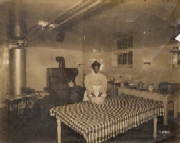 Oxmoor Farm. Recollections
and letters written by the Bullitts who lived at Oxmoor during the antebellum years reveal the everyday
life of the slaves. Letters from 1847 tell the story of Martha Bullitt, her courtship and marriage, and her tragic
death at a young age. Recollections and letters written about and during the Civil War disclose the events that
shaped the Bullitts during this tumultuous time and why they decided to close up the Oxmoor house and farm and
move to the city. Letters, blueprints, and diary entries dated 1909-1928 tell the story of how Oxmoor became the
Bullitt home once again and how it was transformed from a small plantation farmhouse to a modern southern
estate. And there were many touching letters that show the close and loving relationship of the Bullitt
family.Throughout the last five years the Bullitt Family Papers have been among the most widely
used of our collections. Last year historian Sam Thomas completed his history of the Oxmoor Farm estate and the Bullitt family, for
which he extensively used this collection. Numerous Filson Fellows have also used this collection during their
research at The Filson. The materials in the collection span almost every era in American history and include the
invaluable documentation of local and national history, making the Bullitt Family Papers
Oxmoor Farm. Recollections
and letters written by the Bullitts who lived at Oxmoor during the antebellum years reveal the everyday
life of the slaves. Letters from 1847 tell the story of Martha Bullitt, her courtship and marriage, and her tragic
death at a young age. Recollections and letters written about and during the Civil War disclose the events that
shaped the Bullitts during this tumultuous time and why they decided to close up the Oxmoor house and farm and
move to the city. Letters, blueprints, and diary entries dated 1909-1928 tell the story of how Oxmoor became the
Bullitt home once again and how it was transformed from a small plantation farmhouse to a modern southern
estate. And there were many touching letters that show the close and loving relationship of the Bullitt
family.Throughout the last five years the Bullitt Family Papers have been among the most widely
used of our collections. Last year historian Sam Thomas completed his history of the Oxmoor Farm estate and the Bullitt family, for
which he extensively used this collection. Numerous Filson Fellows have also used this collection during their
research at The Filson. The materials in the collection span almost every era in American history and include the
invaluable documentation of local and national history, making the Bullitt Family Papers  a significant resource
for researchers. The family’s correspondence with prominent families, such as the
Binghams, Speeds, Logans and Marshalls, emphasizes their local
importance and also illuminates the society of antebellum Louisville, reveals the role of women in the family,
and sheds light on the everyday lives of the Bullitt slaves. Other documents, including letters from Patrick Henry,
a land grant signed by Thomas Jefferson, Civil War correspondence from the three sons of William Christian
Bullitt, and letters and photographs from World War II, contain important information about national figures
and events.
a significant resource
for researchers. The family’s correspondence with prominent families, such as the
Binghams, Speeds, Logans and Marshalls, emphasizes their local
importance and also illuminates the society of antebellum Louisville, reveals the role of women in the family,
and sheds light on the everyday lives of the Bullitt slaves. Other documents, including letters from Patrick Henry,
a land grant signed by Thomas Jefferson, Civil War correspondence from the three sons of William Christian
Bullitt, and letters and photographs from World War II, contain important information about national figures
and events.
With the cataloging process now complete, I will soon begin to compile the information needed for the card catalog and online catalog. Following that phase, I will move on to cataloging the collection’s photographs, another time-consuming project. “As for now, court is in recess.”
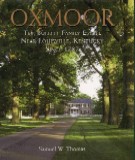 Oxmoor: The Bullitt Family Estate Near Louisville, Kentucky Since 1787
Oxmoor: The Bullitt Family Estate Near Louisville, Kentucky Since 1787
By Samuel W. Thomas
Price: $40
Samuel Thomas’ definitive history of one of Kentucky’s earliest farms is available for purchase from The Filson
Historical Society. As old as the Commonwealth of Kentucky, Oxmoor Farm has witnessed the entire continuum
of Kentucky, from its pioneer settlement to suburban development. Thomas consulted The Bullitt family papers in his
research of Oxmoor, a publication conceived, financed and executed by the Oxmoor Cemetery Corporation. A great gift
of Kentucky history for family and friends!
To purchase your copy of Oxmoor, call The Filson at (502) 635-5083 or use our Online Bookstore.
About |
The Filson Historical Society
1310 South Third Street - Louisville, KY 40208
Phone: (502) 635-5083 Fax: (502) 635-5086
Hours
The Ferguson Mansion and Office
Monday - Friday: 9 am. - 5 pm.
Saturday and Sunday closed
Library
Monday - Friday: 9 am. - 5 pm.
Saturday: 9 am. - 12 noon
